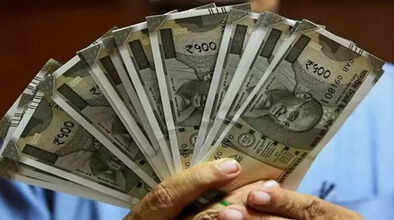Investment: Apart from making money, this government scheme also saves you huge taxes..

Schemes to save tax along with income
The gap between expenses and savings is always high in middle-class families. After taking out the necessary expenses from employment or salary, he wants to save some money for his future. Amidst all the responsibilities, every employed person must have thought at some point in time about how they can save so much money, so that he does not have to earn in old age. Along with this, income tax can also be saved. Before investing our saved money somewhere, the thought of risk comes to our mind. In such a situation, we are going to tell you about such investment schemes of the government, through which you can make money and also save a lot of tax.
Employee Provident Fund (EPF)
Any government or private employee has a Provident Fund (PF) account. Through this, he gets Social Security in case of retirement or job loss. Crores of employees in India are associated with EPFO. 12% of the basic salary of the employee is deposited in the PF account. The company deposits only this much amount. This fund matures when the employee turns 58 years old. Then the employee can withdraw the amount deposited in it. Through this, you can raise a good amount for your retirement. In case of an emergency, a partial withdrawal is allowed from it. The special thing about this scheme is that your contribution to it is eligible for tax deduction under section 80C.
Senior Citizen Saving Scheme
If you are a senior citizen and want to save tax along with a safe investment, then you can invest money in the Post Office Senior Citizens Savings Scheme Account (SCSS). People above 60 years can invest money in this scheme. Currently, 8.20% annual interest is being given in this scheme. This scheme is 100% protected by the government. The maturity period of this scheme is 5 years. The maximum limit of investment is Rs 30 lakh per person. The interest keeps getting revised every 3 months. If you invest Rs 30 lakh, you will get an interest of Rs 61,500 quarterly, i.e., in 3 months. If you divide it, the interest becomes Rs 20500 per month. If a couple invests, the combined monthly income becomes Rs 41000. By investing in this scheme, you can claim a deduction of Rs 1.5 lakh from your total income under section 80C of the Income Tax Act.
Public Provident Fund (PPF)
Public Provident Fund is a guaranteed scheme of the government. Your money invested in it remains safe, and you also get guaranteed returns. The government guarantees you security in the PPF account. Currently, 7.1% annual interest is being given on the PPF account. That means by investing in it, you can save a huge amount of tax on the one hand and also get returns. The government directly regulates it. The government itself decides the interest to be received on it every 3 months. Therefore, it is completely safe from market risk. In a PPF account, you get the facility to invest in installments. The minimum investment amount has been kept at Rs 500. A maximum of Rs 1.5 lakh can be invested in a year. If there is a shortage of money, then you can deposit money in a maximum of 12 installments in a financial year.
Sukanya Samriddhi Yojana
Sukanya Samriddhi Yojana is a scheme of the government, in which you can secure your daughter's future by investing. Along with this, you can also do a lot of tax saving. By investing in this scheme, you can collect a fund of Rs 70 to 90 lakh. Currently, for the first quarter of 2025, it is getting 8.2% annual interest. An account can be opened in Sukanya Samriddhi Yojana for daughters from birth to the age of 10 years. You can invest a minimum of Rs 250 to a maximum of Rs 1.5 lakh every year. The investment period is 15 years, but its maturity is at 21 years. You can open this account till the age of your daughter is 10 years and can withdraw the entire amount when she turns 21. Under this, you can get tax exemption on annual investment up to Rs 1.5 lakh. You will get this exemption only under the old tax regime.
Disclaimer: This content has been sourced and edited from Hr Breaking. While we have made modifications for clarity and presentation, the original content belongs to its respective authors and website. We do not claim ownership of the content.

